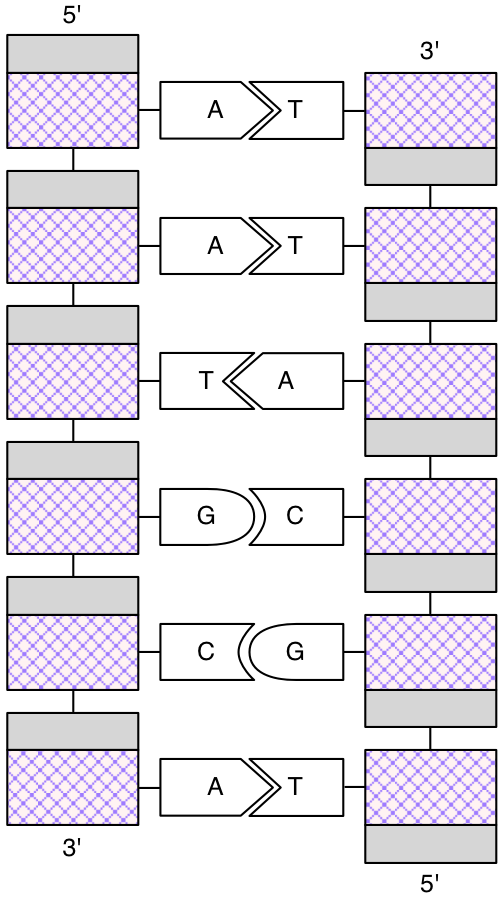- Nucleotides
- DNA and RNA
- The DNA double helix
1. Before you start this topic, you need to know the structure of nucleic acid, what a nucleotide is, how nucleotides are connected, and why nucleic acids are said to have a direction.
2. Review the section on DNA in chapter 2 of your textbook, figure 8.3 in chapter 8 of your text, as well as your lecture notes. You should know the answers to the following questions:
- What is a DNA strand's backbone made of?
- How are the nitrogenous bases positioned, relative to a DNA strand's backbone?
- When two DNA strands come together, how are their backbones and nitrogenous bases positioned?
- What is the principle of complementarity?
- How are bases paired in a DNA double strand (which base pairs with which base)?
- In a DNA double strand, how do the two strands run relative to each other (in what directions)?
3. Once you have understood the principles that govern the formation of double stranded DNA, you should be able to apply them and draw a diagram of a DNA double strand. Use the shapes below and on a piece of paper, draw a double stranded (usually abbreviated as ds) DNA with the sequence AATGCA. Make sure to mark your directions on the diagram! Once you have done that, check your diagram by mousing over the word ANSWER below.

ANSWER

4. You now know what dsDNA looks like (how are the two strands and their nucleotides arranged), but what is holding the two strands together? Search for that information in your textbook and notes. Once you have reviewed that material, you should be able to answer the following questions:
- Why can bases pair up according to the principles of complementarity?
- What type of bond holds two complementary bases facing each other in a dsDNA?
- Are different pairs of bases held together by a different number of bonds?
- How strong are the connections between different pairs of bases?
- What is DNA melting?
- How does the sequence of DNA determine its melting temperature?
5. If you feel that you have mastered the concepts on this page, you can move to the first topic in the next subunit, which discusses DNA polymerases, the enzymes responsible for DNA replication.